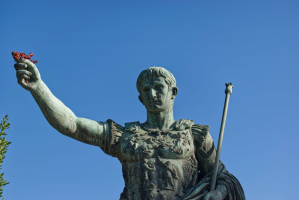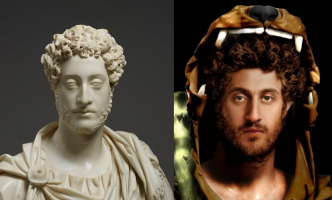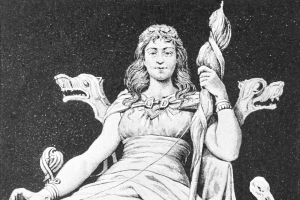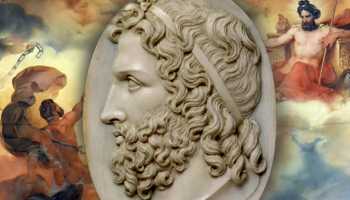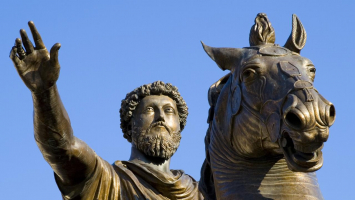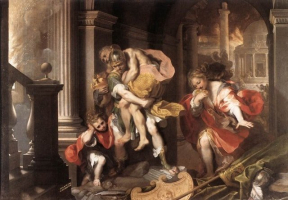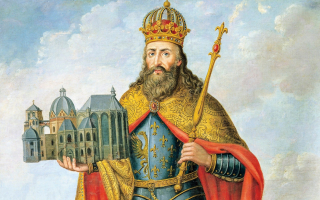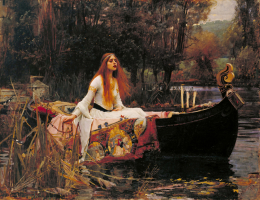Top 12 Most Famous Roman Goddesses
Religion in ancient Rome consisted of several imperial and provincial religious rituals practiced by both the inhabitants of Rome and those brought under its ... read more...dominion. The Romans considered themselves to be profoundly religious, and their success as a world power was attributed to their collective piety in keeping good connections with the gods. Their polytheistic faith is notable for honoring numerous deities. Look at the list of the 12 most famous Roman goddesses to discover a little more information about them.
-
One of the most famous Roman goddesses is Juno. Juno was an ancient Roman goddess who served as the state's protector and special counselor. In Greek mythology, she was compared to Hera, the queen of the gods. She was Saturn's daughter and Jupiter's wife, as well as the mother of Mars, Vulcan, Bellona, and Juventas. Her sacred animal, like Hera's, was the peacock. Uni, her Etruscan counterpart, was thought to keep an eye on the women of Rome. Juno, the patron goddess of Rome and the Roman Empire, was known as Regina ("Queen") and was a part of the Capitoline Triad (Juno Capitolina), which also included Jupiter and Minerva, goddess of wisdom.
Juno's warlike appearance among the Romans is reflected in her attire. She was frequently depicted armed and wearing a goatskin cloak. The classic image of this warlike feature was influenced by the Greek goddess Athena, who wore a goatskin or a goatskin shield known as the aegis. Juno was also seen with a diadem.
Juno's theology is one of the most difficult and contentious questions in Roman religion. Juno had more prominent and diversified epithets, names, and titles than any other major Roman deity, signifying numerous qualities and responsibilities of the goddess. These included Pronuba and Cinxia, in keeping with her prominent position as a goddess of marriage. Other Juno epithets, on the other hand, have broader implications and are less thematically related.
While her association with the concepts of vital force, vital energy fullness, and eternal youth is now widely accepted, the diversity and complexity of her personality have given rise to numerous, and sometimes irreconcilable, interpretations among modern researchers.
Juno is undoubtedly the heavenly protector of the society, displaying both a sovereign and a fertile personality, which is frequently connected with a military one. She appeared in numerous ancient Italian towns, including Lanuvium as Sespeis Mater Regina, Laurentum, Tibur, Falerii, Veii as Regina, Tibur, and Falerii as Regina, and Curibztis, Tusculum, and Norba as Lucina. She is also found in Praeneste, Aricia, Ardea, and Gabii. A month was named Juno in five Latin places (Aricia, Lanuvium, Laurentum, Praeneste, Tibur).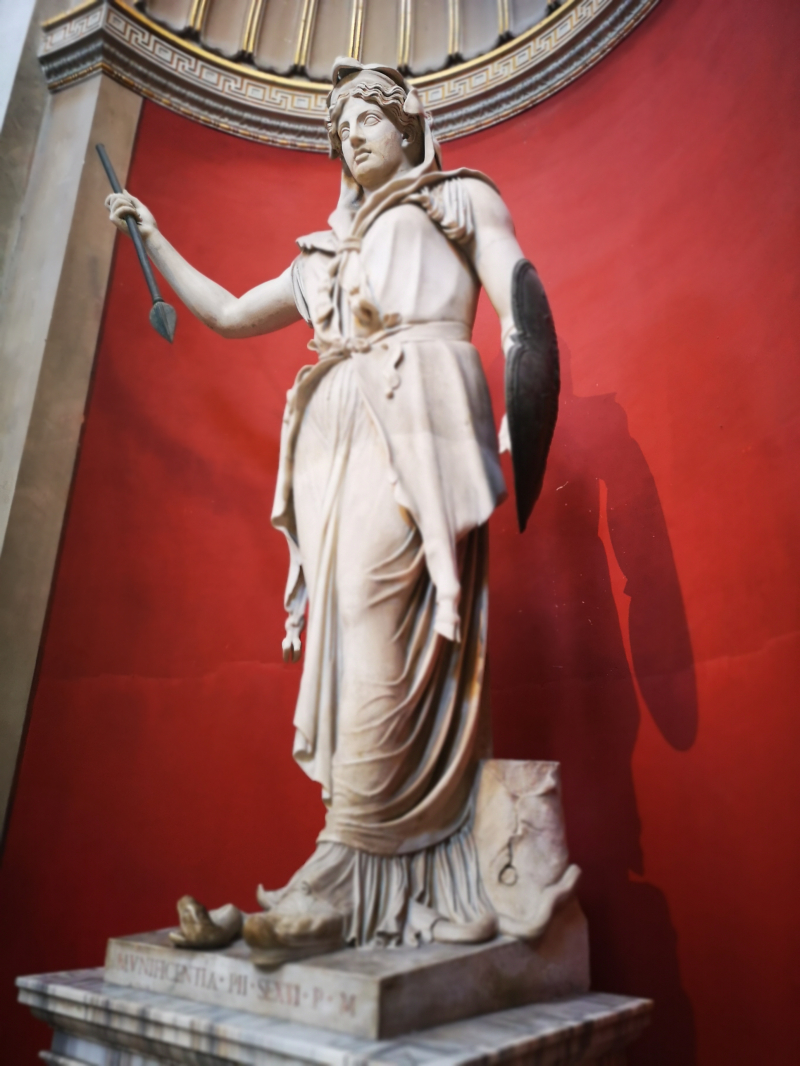
en.wikipedia.org 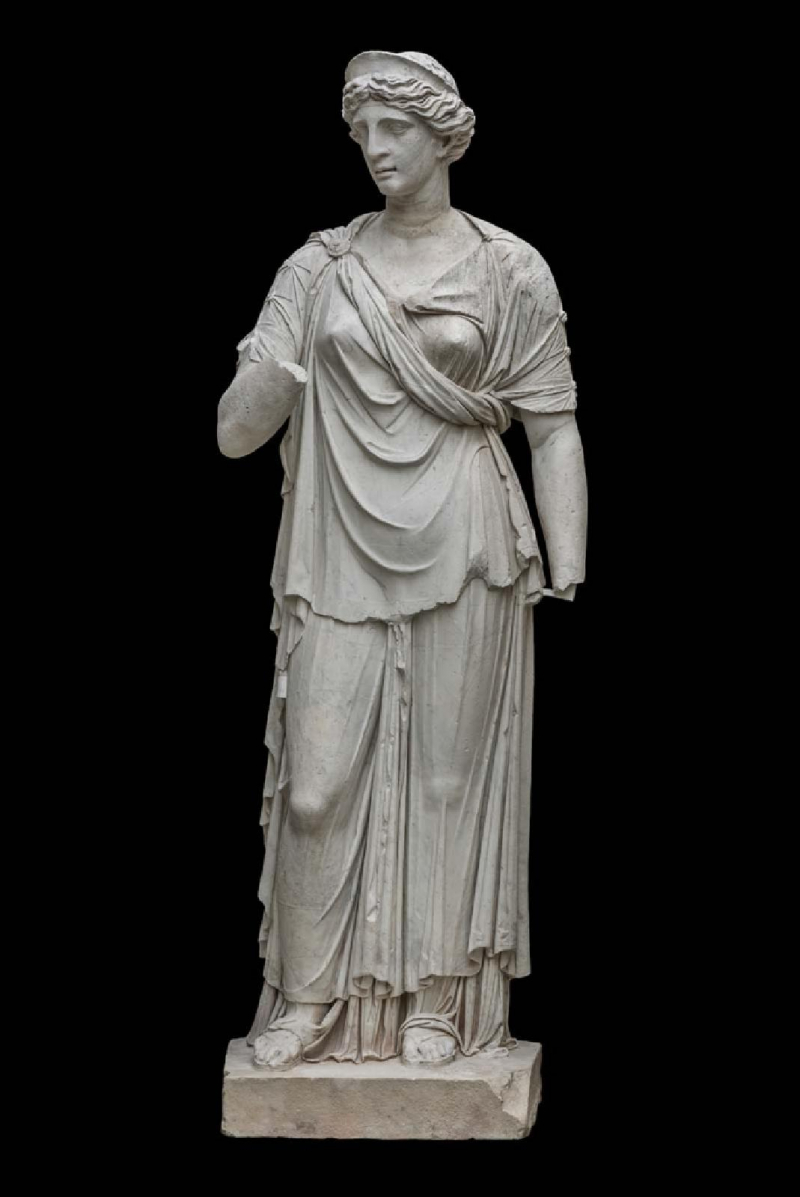
mythopedia.com -
Minerva is the Roman goddess of wisdom, justice, law, and victory, as well as the patroness of the arts, trade, and strategy. Minerva, unlike Mars, is only associated with defensive warfare. The Romans associated her with the Greek goddess Athena beginning in the second century BC. Minerva, together with Jupiter and Juno, is one of the three Roman deities known as the Capitoline Triad.
She was a virgin goddess of music, poetry, medicine, wisdom, trade, weaving, and crafts. She is typically shown with her holy creature, an owl known as the "owl of Minerva," which symbolized her link with intelligence and understanding, as well as the snake and the olive tree, which are less frequently depicted. Minerva is frequently represented as tall, athletic, and muscular, wearing armor and wielding a spear. She is revered, honored, and respected as the most prominent Roman deity. Marcus Terentius Varro saw her as the personification of ideas and the design for the universe.
Minerva is a well-known character in Roman mythology. She occurs in a number of well-known mythologies. Many of the myths associated with her Greek counterpart Athena are credited to Minerva in Roman mythology, such as the naming of Athens as the outcome of a struggle between Minerva and Neptune in which Minerva created the olive tree.
During the Roman colonization of Britain, it was traditional for carpenters to have equipment adorned with Minerva statues in order to gain more protection from the goddess of crafts. Some women would also have photographs of themselves on hairpins or jewelry. She was even depicted on coffins and signet rings in funerary art.
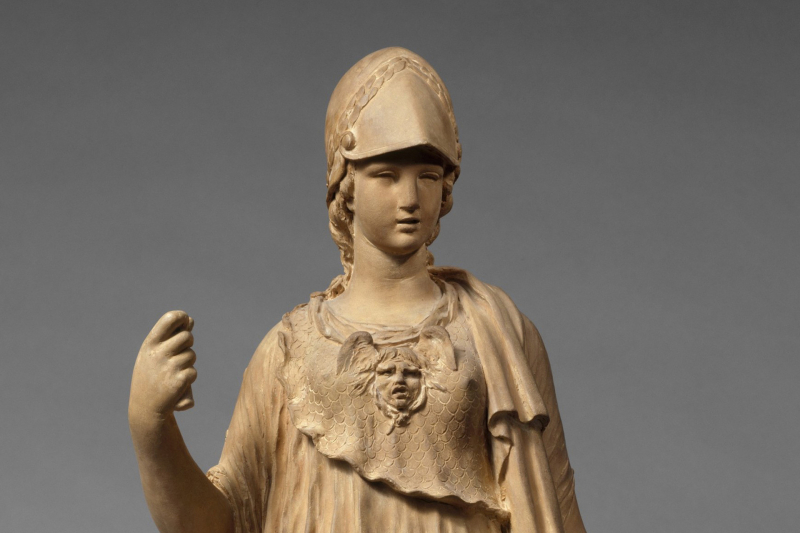
mythopedia.com 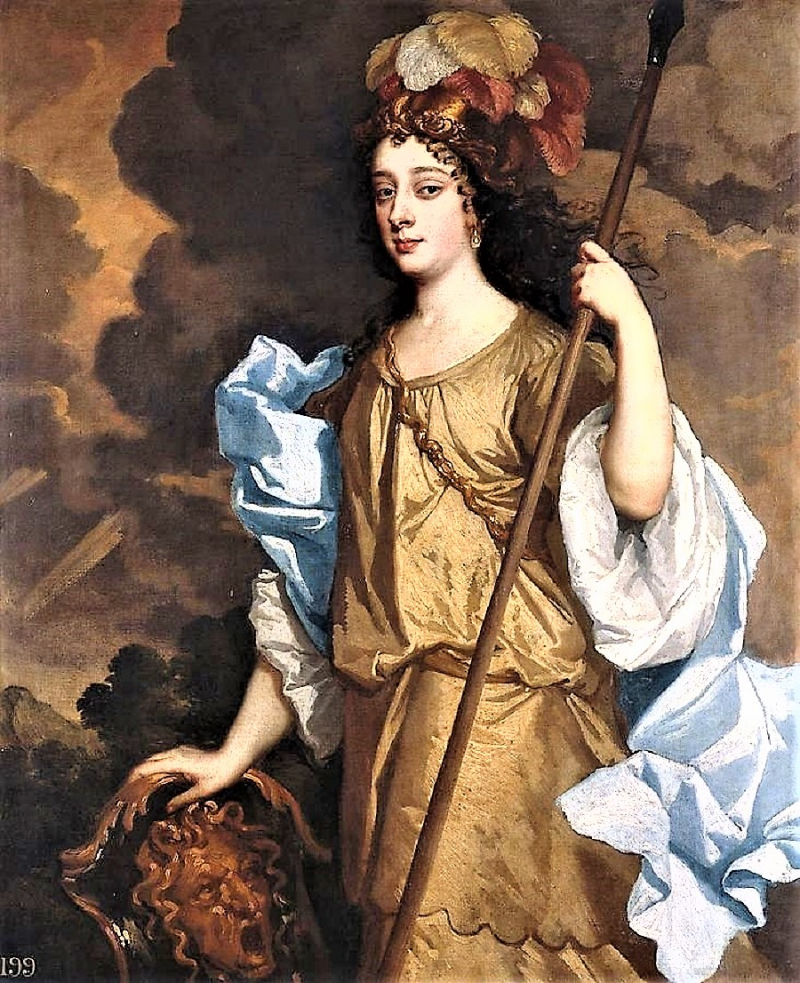
megane2.ru -
Flora is a Roman goddess of flowers and the spring season, as well as a symbol of nature and flowers (especially the mayflower). While she was otherwise a minor figure in Roman mythology, as one of several fertility goddesses, her affiliation with spring, as well as her function as goddess of youth, gave her special significance with the arrival of spring. She was one of the fifteen deities that had their own flamen, the Floralis, which was one of the minor flames. Chloris is her Greek counterpart.
Flora is derived from Proto-Italic *flōsā (goddess of flowers), which is derived from Proto-Italic *flōs ('flower'; cf. Latin flōs, flōris 'blossom, flower'). It is cognate with Fluusa, the Oscan goddess of flowers, indicating that the religion was more extensively recognized among Italic peoples. The name is derived from the Proto-Indo-European *bʰleh₃ōs ('blossoming').
Her Floralia festival, held between April 28 and May 3, represented the regeneration of the cycle of life, drinking, and flowers. The festival was initially held in 240 B.C.E., and she was given a temple in 238 B.C.E. on the suggestion of the Sibylline writings. Five days of farces and mimes - ithyphallic, and incorporating nudity when called for - were performed at the festival, with the men dressed in flowers and the women donning typically forbidden gay costumes - followed by the sixth day of goat and hare hunting. Another (rose) celebration was conducted in her honor on May 23.
Flora's Greek equivalent is Chloris, a nymph. Flora is married to Favonius, the wind god also known as Zephyr, and Hercules is her companion. Flora rose to greater prominence in the Renaissance humanists' neo-pagan resurrection of Antiquity than she had in ancient Rome.
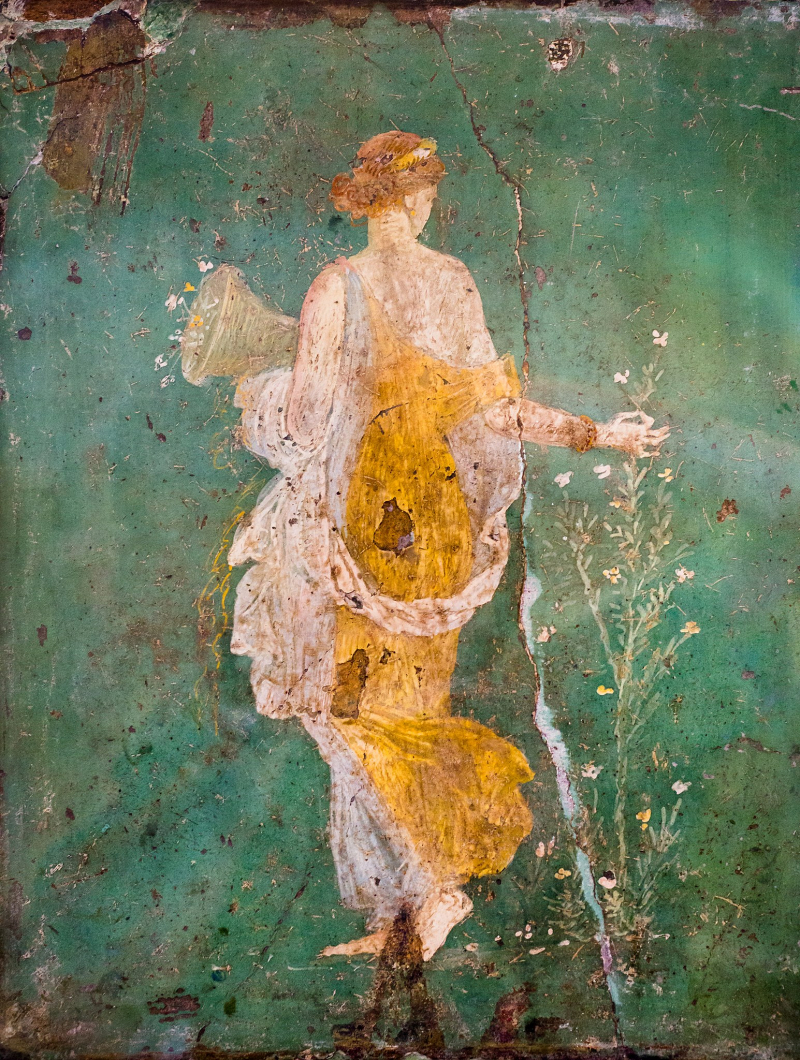
en.wikipedia.org 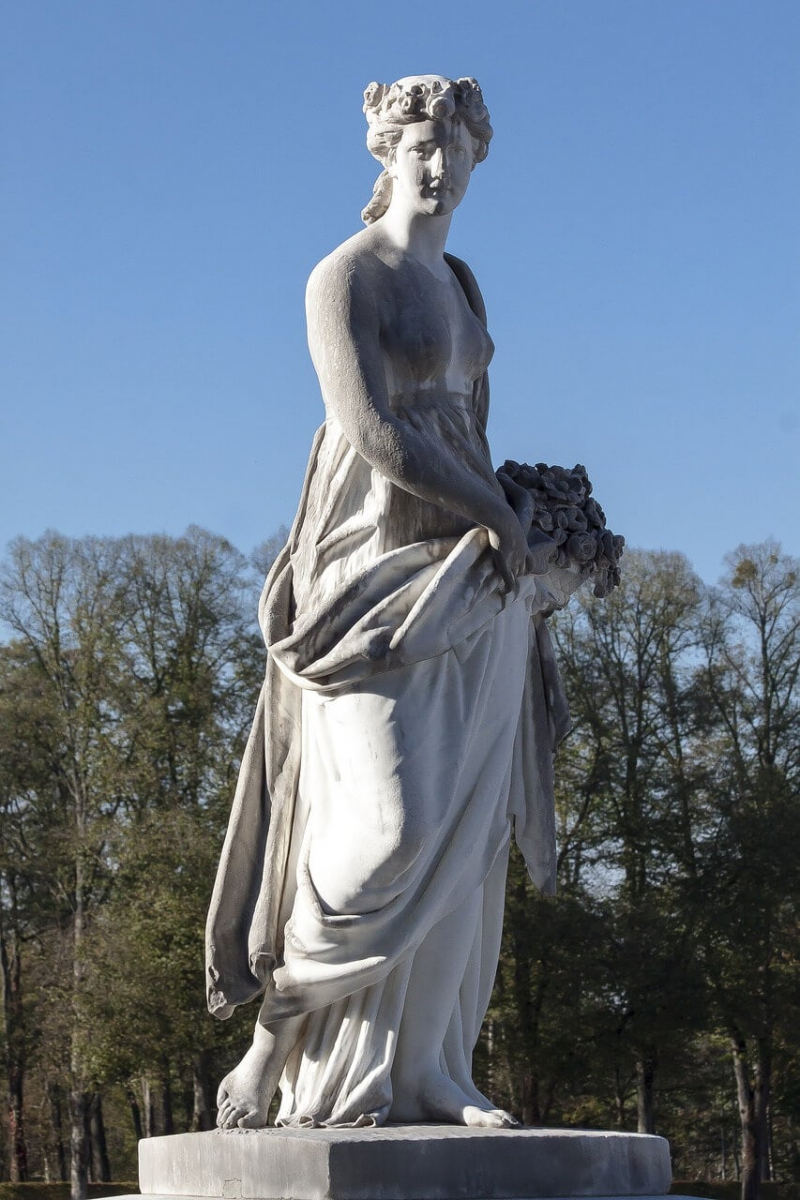
symbolsage.com -
One of the most famous Roman goddesses we would like to introduce to you is Vesta. In Roman religion, Vesta is the virgin goddess of the hearth, home, and family. She was rarely shown in human form, preferring to be symbolized by the fire of her temple in the Forum Romanum. Only her priestesses, the Vestal Virgins, were allowed to enter her temple, where they guarded specific precious artifacts, prepared flour and sacred salt (mola salsa) for official sacrifices, and tended Vesta's sacred fire at the temple hearth. Their virginity was regarded to be important to Rome's survival; if found unchaste, they were punished by being buried alive. Vesta was regarded as the Roman people's guardian, and her festival, the Vestalia (7-15 June), was recognized as one of the most important Roman celebrations. During the Vestalia, privileged matrons traveled across the city barefoot to the temple, where they made food offerings. Vesta was so important in Roman religion that after the rise of Christianity, hers was one of the last non-Christian cults to remain functional until it was forcibly abolished in AD 391 by the Christian emperor Theodosius I.
The myths about Vesta and her priestesses were sparse; the most prominent were stories about a virgin priestess being miraculously impregnated by a phallus appearing in the flames of the holy hearth, the manifestation of the goddess combined with a male supernatural being. In some Roman myths, Romulus and Remus, as well as the generous king Servius Tullius, was conceived in this manner. Vesta was one of the Dii Consentes, a group of twelve of the most revered gods in the Roman pantheon. She was Saturn and Ops's daughter, and the sister of Jupiter, Neptune, Pluto, Juno, and Ceres. Hestia is her Greek equivalent.
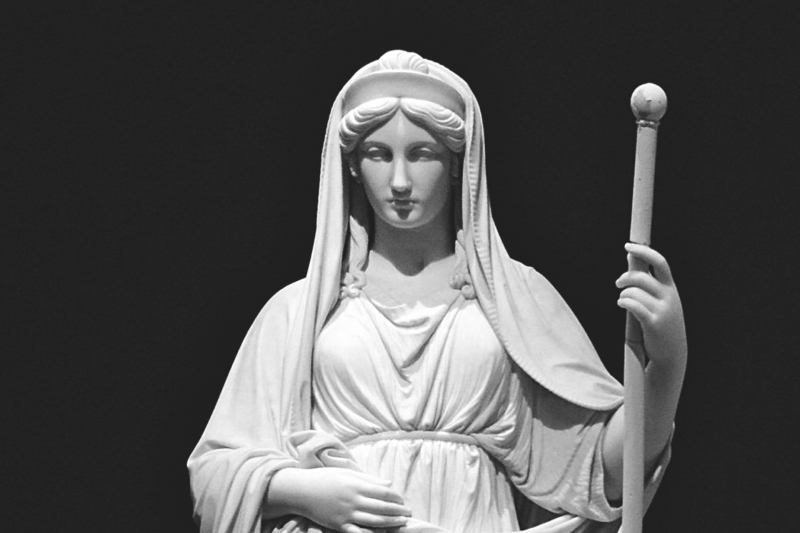
mythopedia.com 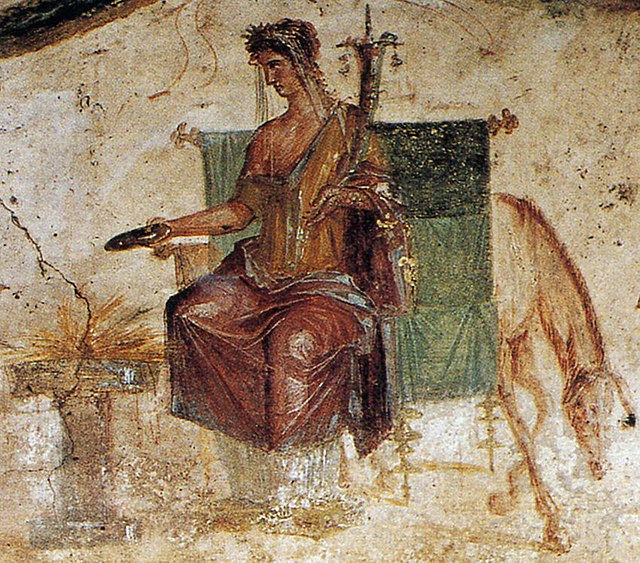
en.wikipedia.org -
Venus was a Roman goddess who was associated with love, beauty, desire, sex, fertility, prosperity, and victory. She was the progenitor of the Romans through her son, Aeneas, who escaped the collapse of Troy and fled to Italy, according to Roman legend. Julius Caesar claimed her as a foremother. Venus was adored in Roman religion under a variety of cult titles and was crucial to many religious festivals.
The stories and symbolism of her Greek counterpart Aphrodite were adapted for Roman art and Latin literature by the Romans. Venus, as the embodiment of love and sexuality, became one of the most commonly mentioned deities of Greco-Roman mythology in the West's later classical culture. In paintings, she is frequently represented naked.
Venus has been called the most unique creation of the Roman pantheon, as well as "an ill-defined and assimilative" native goddess blended with "a strange and exotic Aphrodite." In contrast to the formal, contractual relations between most members of Rome's official pantheon and the state, and the unofficial, criminal manipulation of divine energies through magic, her cults may represent the religiously lawful appeal and seduction of the divine by mortals.
Q. Fabius Gurges swore to Venus Obsequens the earliest known temple to Venus during a war against the Samnites. It was erected around 295 BC near the Aventine Hill and was allegedly sponsored by fines imposed on Roman women for sexual offenses. Its rites and features were most likely influenced or based on Greek Aphrodite cults, which had already spread in various forms throughout Italian Magna Graeca. Venus Obsequens is dedicated on the same day as the Vinalia rustica festival.
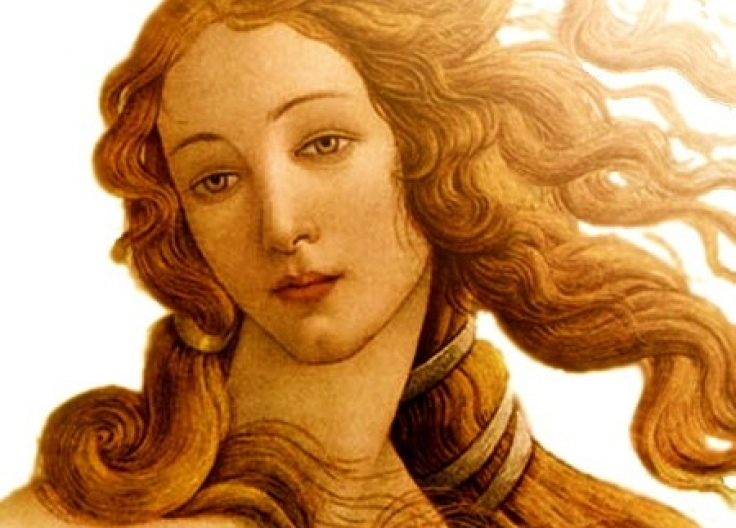
religionworld.in 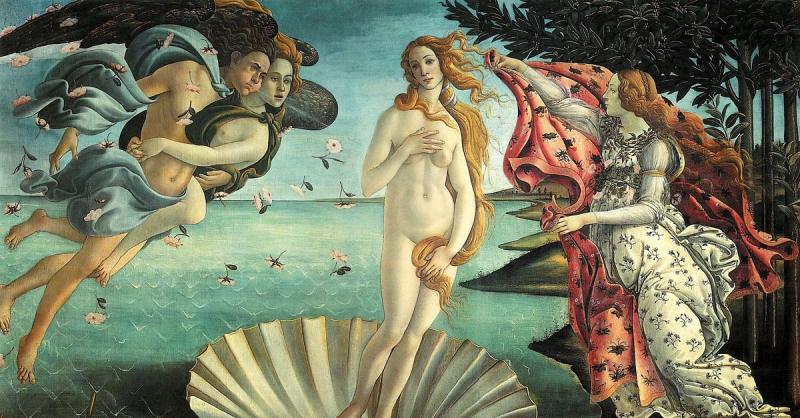
worldhistory.org -
Ceres was a goddess of agriculture, grain crops, fertility, and motherly relationships in ancient Roman religion. She was the principal deity in Rome's so-called plebeian or Aventine Triad before being joined with her daughter Proserpina in what Romans dubbed "the Greek Ceres rites." Cerealia, her seven-day April festival, featured the popular Ludi Ceriales (Ceres' games). She was also venerated during the Ambarvalia festival's May Lustratio of the Fields, harvest time, and Roman marriages and funeral ceremonies. She is typically portrayed as a mature woman. Ceres is the only one of Rome's many agricultural deities to be mentioned among the Dii Consentes, Rome's equivalent to Greek mythology's Twelve Olympians. The Romans recognized her as the Greek goddess Demeter's counterpart, whose mythology was recreated for Ceres in Roman art and literature.
Ceres was credited with discovering spelt wheat (Latin far), yoking oxen and plowing, sowing, protecting, and nurturing the immature seeds, and bestowing agriculture on humanity. She possessed the ability to fertilize, increase, and fructify plant and animal seeds, and her rules and ceremonies safeguarded all agricultural pursuits. Cerealia, Ceres' biggest festival, took place from mid to late April. Her plebeian aediles planned it, and it included circus games (ludi circenses). It began with a horse race in the Circus Maximus, the starting point of which was beneath and opposite her Aventine Temple; the turning post at the further end of the Circus was consecrated to Consus, a grain storage deity. Following the race, foxes were released into the Circus, their tails ablaze with lit torches, maybe to cleanse the crops and protect them from illness and vermin, or to bring warmth and vigor to their growth. Cerealia hosted ludi scaenici (theatrical religious festivities) from April 12 to 18.
The "Temple of Ceres in the Circus Maximus" (her Aventine Temple) is described by Vitruvius (c.80 - 15 BC) as typical Araeostyle, with widely spaced supporting columns and architraves of wood rather than stone. This type of temple is clumsy, heavy roofed, low and wide, with pediments ornamented with clay or brass statues gilt in the Tuscan fashion. During the early Imperial age, soothsayers advised Pliny the Younger to rebuild an ancient, "old and narrow" Ceres shrine on his rural estate near Como. He replaced an antique wooden worship statue of the deity that was inside.
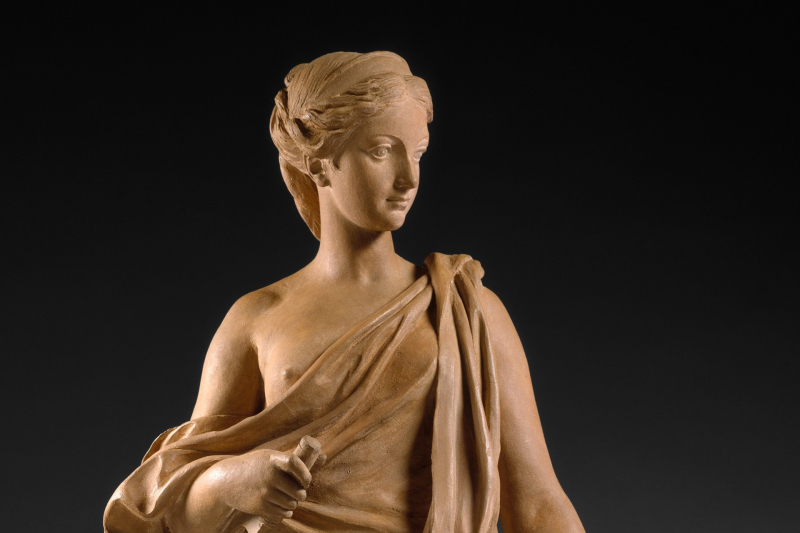
mythopedia.com 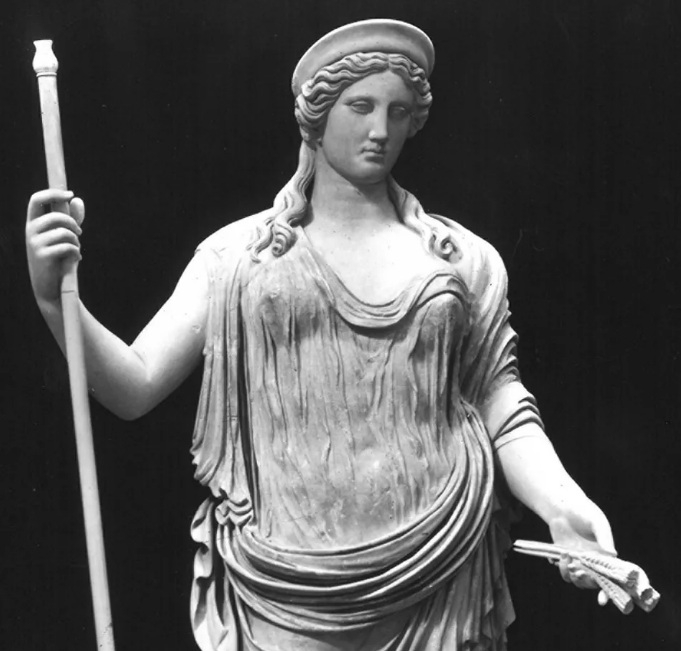
britannica.com -
Diana is a Roman and Hellenistic goddess who is known as the patroness of the countryside, hunters, crossroads, and the Moon. She is associated with the Greek goddess Artemis, and she inherited much of Artemis' mythology early in Roman history, including a birth on the Greek island of Delos to parents Jupiter and Latona, and a twin brother, Apollo, while having an independent origin in Italy.
Diana is revered as a virgin goddess and the patroness of childbirth. Diana was once part of a triad with two other Roman deities: Egeria the water nymph, her servant and midwife, and Virbius, the woodland deity. Diana is adored in Roman neopaganism, Stregheria, and Wicca, among other current neopagan religions. Diana was considered a tripartite divinity throughout the ancient, medieval, and modern times, united with a goddess of the moon (Luna/Selene) and the underworld (usually Hecate).
Diana was a common goddess throughout all Latin tribes. As a result, many sanctuaries were erected for Mary in Latin-inhabited areas. Her primary abode was a forest grove overlooking Lake Nemi, also known as "Diana's Mirror," where she was worshiped as Diana Nemorensis, or "Diana of the Wood." Diana's cult in Rome may be almost as old as the city itself. Varro includes her among the deities for whom King Titus Tatius promised to erect a shrine. According to legend, she possessed a temple on the Aventine Hill in Rome, which was dedicated by King Servius Tullius.
Other known Diana sanctuaries and temples include Colle di Corne near Tusculum, where she is known by the archaic Latin name deva Cornisca and where a collegium of worshippers existed; Évora, Portugal; Mount Algidus, also near Tusculum; Lavinium; and Tibur (Tivoli), where she is known as Diana Opifera Nemorensis. Diana was also revered at a sacred wood recorded by Livy - ad compitum Anagninum (near Anagni) - as well as on Mount Tifata in Campania.
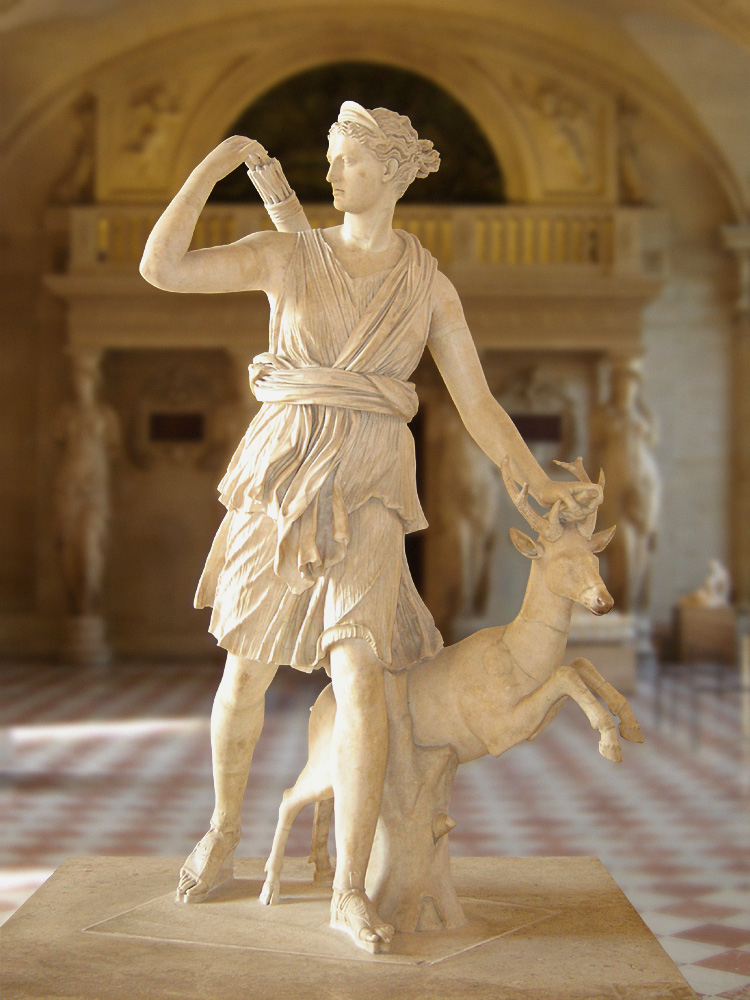
commons.mtholyoke.edu 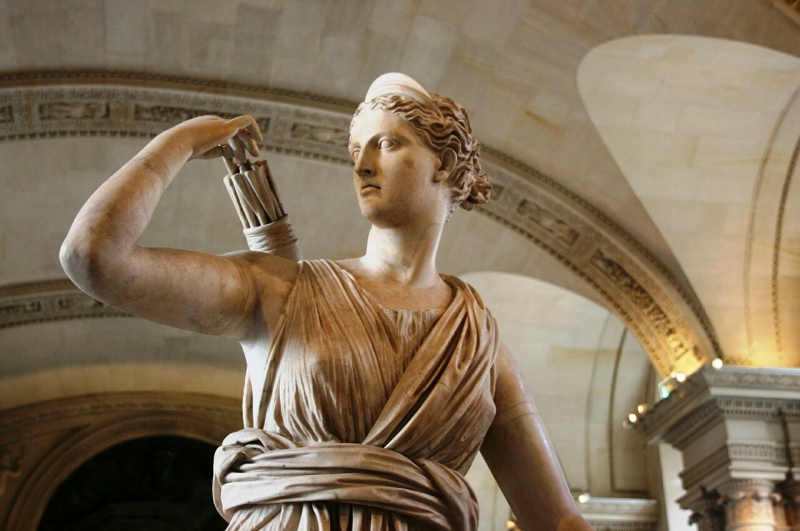
symbolsage.com -
Salacia was the female Goddess of the sea in ancient Roman mythology, worshiped as the goddess of salt water who presided over the depths of the ocean. Her consort was Neptune. Varro implies that Salacia was Neptune's consort, which is confirmed by Seneca, Augustine, and Servius. She is associated with the Greek goddess Amphitrite, Poseidon's consort.
Neptune, the god of the sea, wanted to marry Salacia, but she was so awestruck by her famous suitor that she managed to glide out of his sight and hide from him in the Atlantic Ocean. The Neptune dispatched a dolphin to find her and persuade the fair nymph to return and share his throne. Salacia decided to marry Neptune, and the King of the Deep was so pleased that the dolphin was given a seat in the heavens, where he is today known as the constellation Delphinus.
Salacia is depicted as a beautiful nymph crowned with seaweed, either enthroned behind Neptune or driving alongside him in a pearl shell chariot driven by dolphins, sea-horses (hippocamps), or other fantastic creatures of the deep, and accompanied by Tritons and Nereids. She is dressed as a queen and has nets on her hair. Salacia was the personification of the sea's calm and sunny side. The name Salāci is derived from the Latin sāl, which means "salt," and it refers to the wide, open sea. It is sometimes rendered literally as "sensational." Salacia, Neptune's wife, had him three offspring, the most famous of them was Triton, whose body was half man and half fish. She is also known as the goddess of springs, ruling over the springs of highly mineralized waters. She and Venilia are also known as Neptune's paredrae.
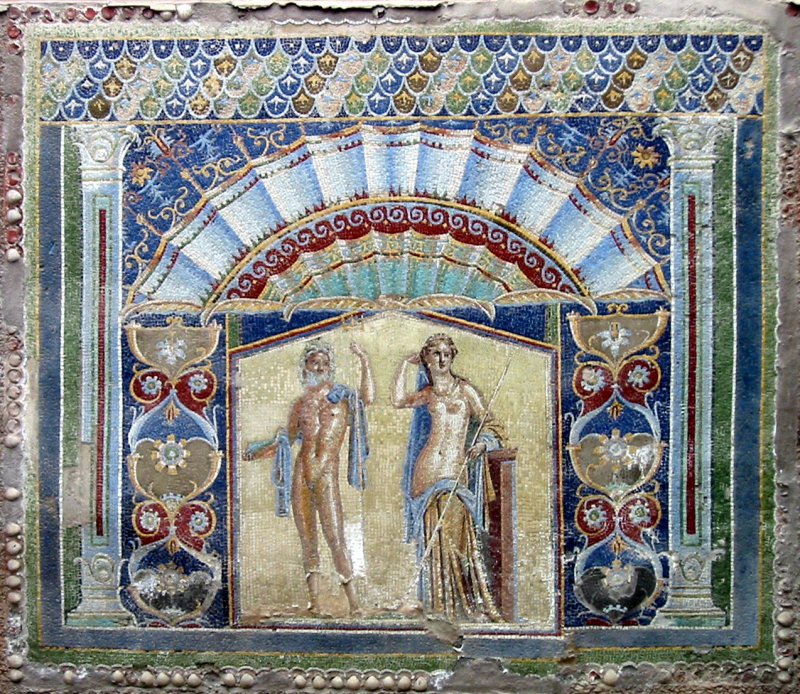
Neptune and Salacia in a mosaic, Herculaneum -en.wikipedia.org 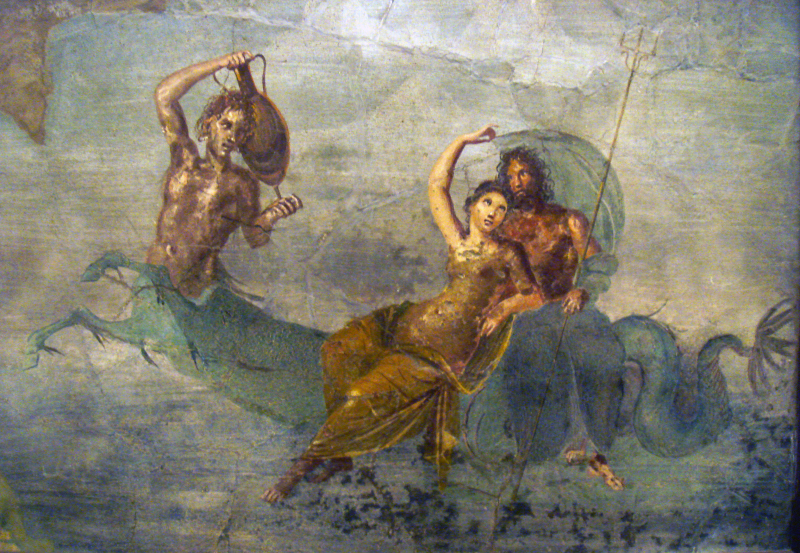
Centaur, Salacia and Neptune, fresco from Pompeii, AD 50–79 -en.wikipedia.org -
One of the most famous Roman goddesses we would like to introduce to you is Luna. Luna is the divine personification of the Moon in ancient Roman religion and myth. She is frequently shown as the female counterpart to the Sun, Sol, as a god. Luna is also occasionally depicted as one of the three Roman goddesses, along with Proserpina and Hecate. Because both Diana and Juno are classified as moon gods, Luna is not usually a distinct goddess, but rather an epithet that specializes in a deity.
Luna's qualities in Roman art are the crescent moon and the two-yoke chariot (biga). Horace refers to her as the "two-horned queen of the stars" in the Carmen Saeculare, which was performed in 17 BC, and asks her to listen to the girls sing as Apollo does to the males.
Varro classified Luna and Sol as visible gods, as opposed to unseen gods like Neptune and deified mortals like Hercules. She was one of the deities proposed by Macrobius as Rome's secret tutelary. Sol and Luna might symbolize the breadth of Roman control throughout the world in the Imperial worship, with the goal of ensuring peace.
Selene was Luna's Greek counterpart. The stories of Selene are transformed as Luna in Roman art and literature. Endymion's myth, for example, was a favorite topic for Roman wall painting.
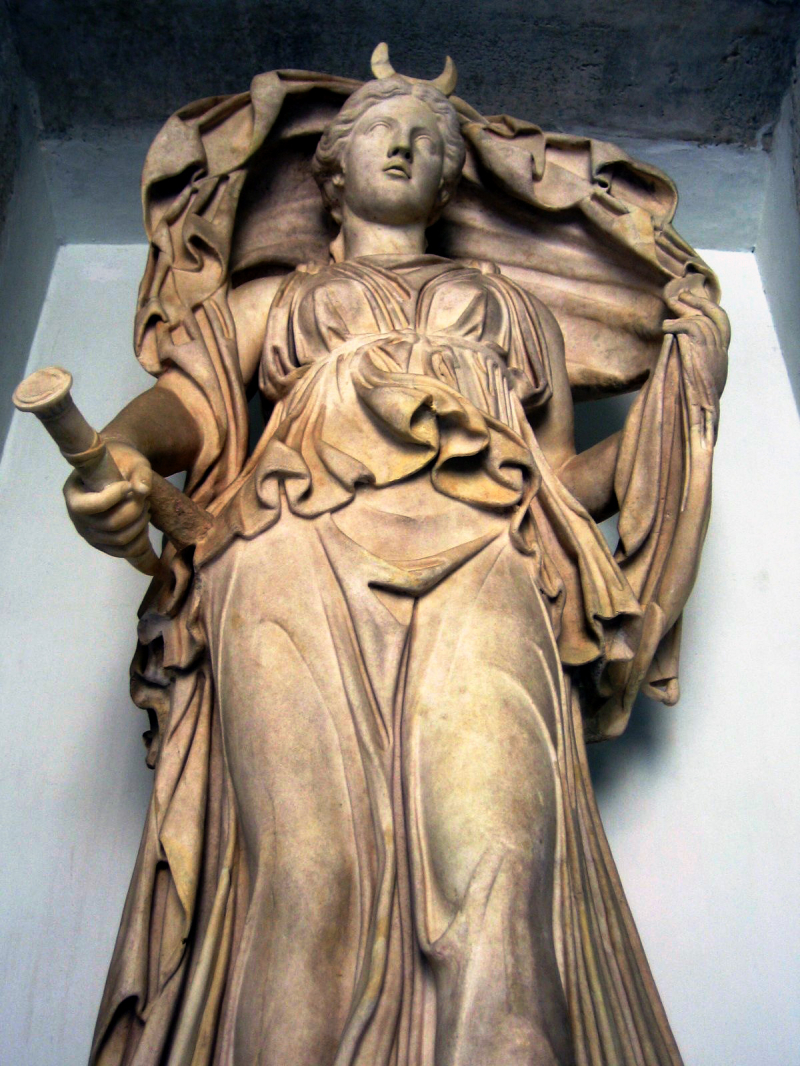
en.wikipedia.org 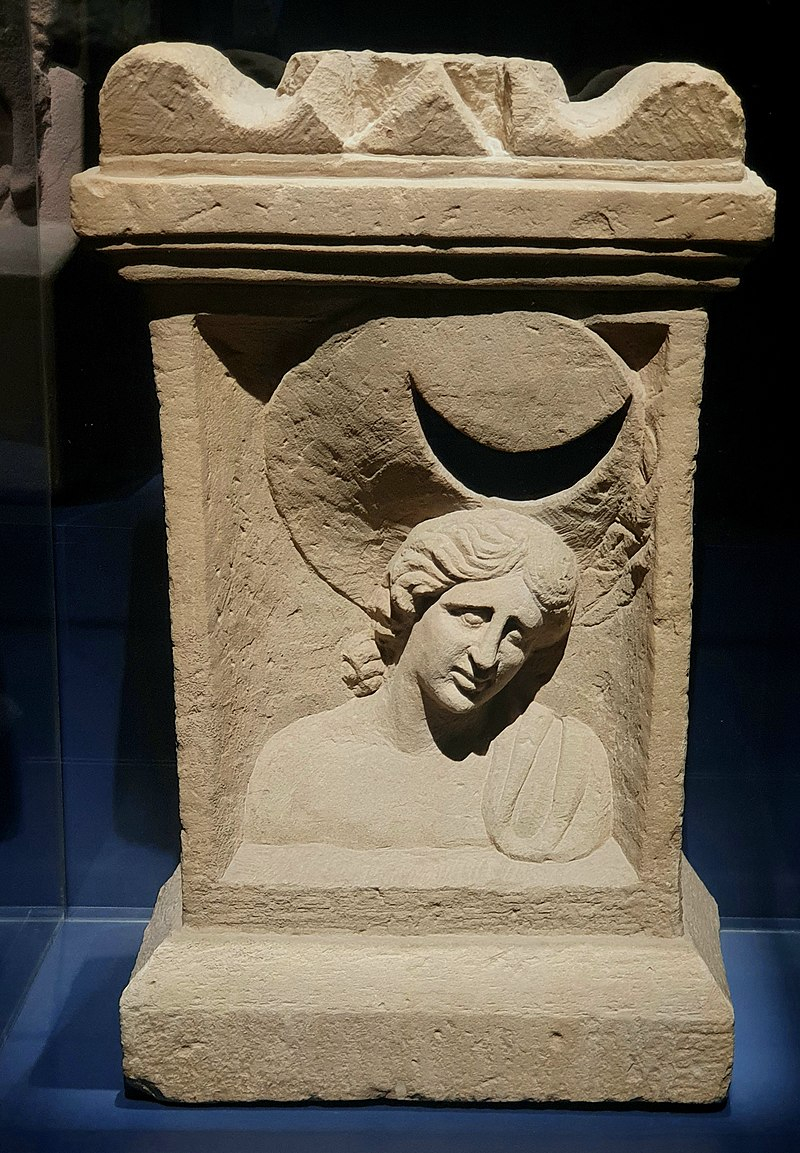
en.wikipedia.org -
Fortuna is the Roman goddess of fortune and the embodiment of luck who, thanks primarily to the Late Antique scholar Boethius, was popular throughout the Middle Ages and into the Renaissance. The blindfolded image of her remains a major figure in many elements of contemporary Italian society, where the dichotomy fortuna / sfortuna (luck / unluck) is evident in everyday social life.
Fortuna is frequently represented with a gubernaculum (ship's rudder), a ball or Rota Fortunae (wheel of fortune), and a cornucopia (horn of plenty). She might bring good or bad luck: she could be veiled and blind, like modern images of Lady Justice, except that Fortuna does not hold a balance. Fortuna came to signify the unpredictability of life. She was also a goddess of fate, having claimed the young lives of the princeps Augustus' grandsons Gaius and Lucius, who were to be the Empire's heirs.
The two first temples listed in Roman calendars were on the right bank of the Tiber, outside the city. The first Fortuna temple was attributed to the Etruscan Servius Tullius, while the second was built in 293 BC as the fulfillment of a Roman vow made during subsequent Etruscan battles. The dedication of her temples took place on June 24, or Midsummer's Day, when Romans would annually float to the temples downstream from the city. They rowed back, garlanded and drunk, after unknown rituals. Fortuna also had a shrine at the Forum Boarium. The cults of Fortuna and Mater Matuta were twinned here (the goddesses shared a festival on 11 June), and the paired temples have been unearthed in the excavation beside the church of Sant'Omobono: the cults are indeed archaic in date. At the end of the third century BC, Romans adopted Fortuna Primigenia of Praeneste in an important cult of Fortuna Publica Populi Romani (the Official Good Luck of the Roman People) on the Quirinalis outside the Porta Collina.
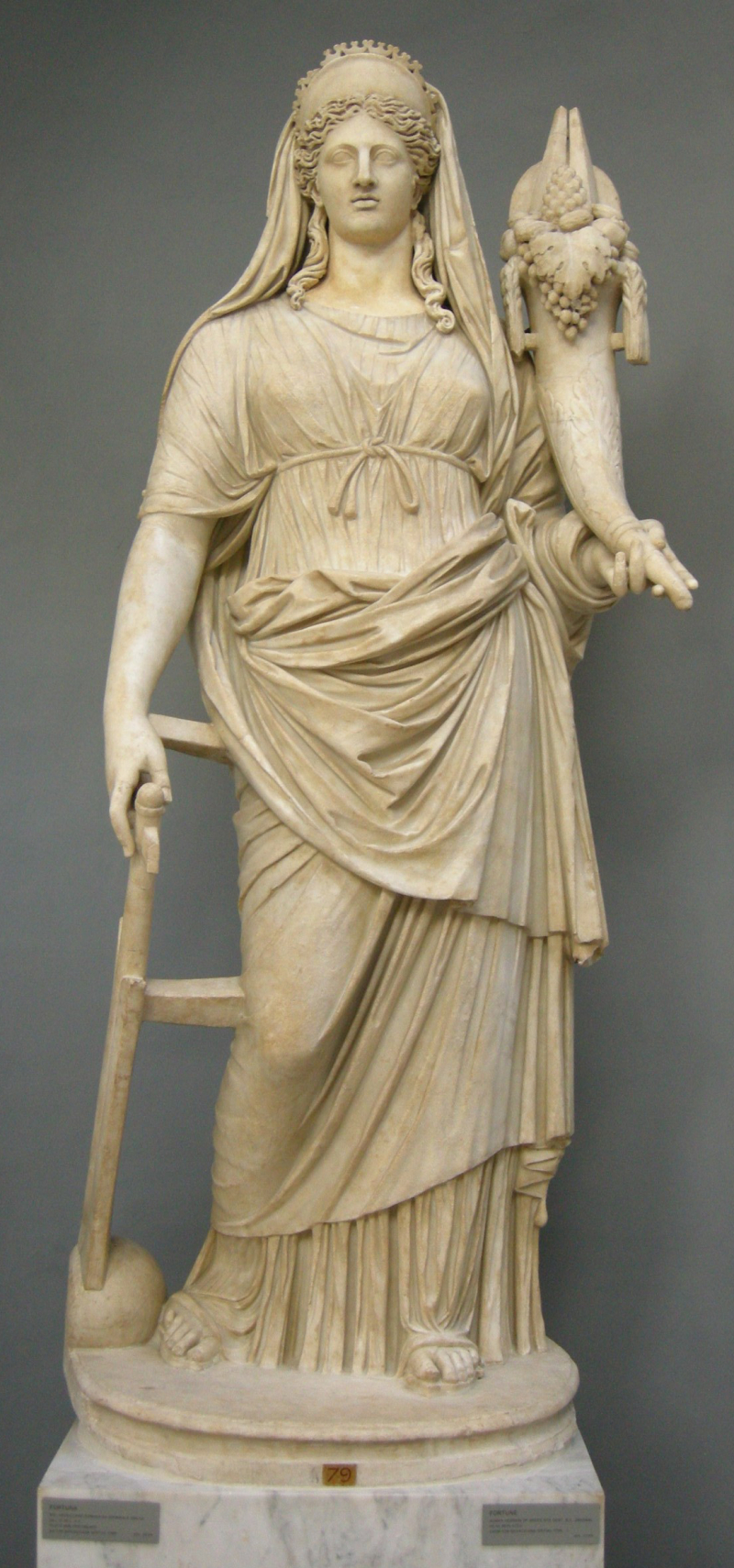
simple.wikipedia.org 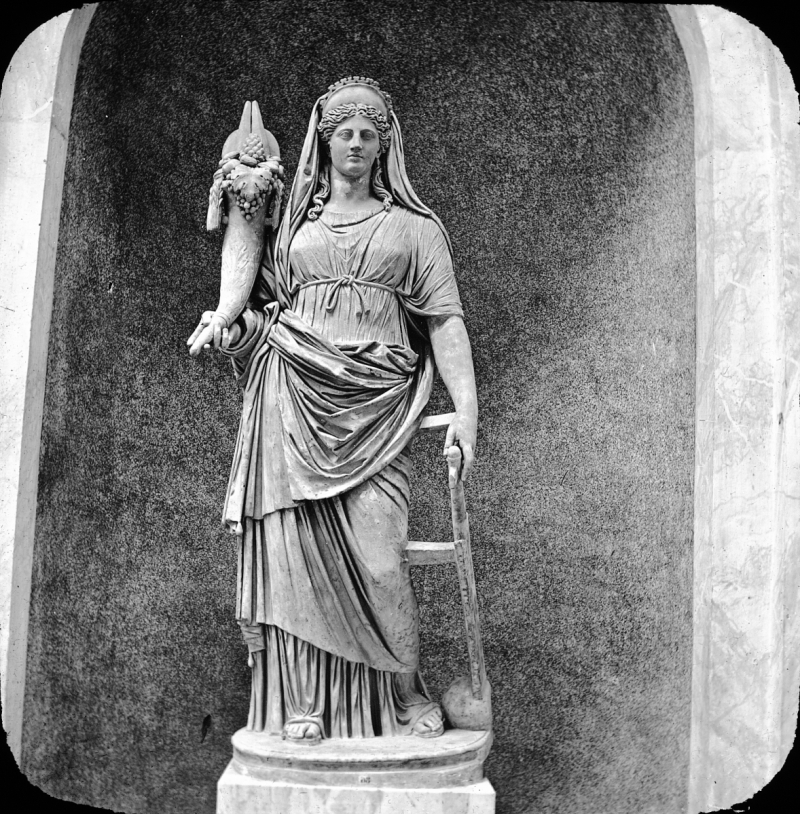
icysedgwick.com -
Bellona was an ancient Roman war goddess. Her greatest distinguishing feature is the military helmet she wears on her head; she frequently rides into battle in a four-horse chariot, holding a sword, spear, or shield and brandishing a torch or whip. Throughout the Roman Empire, she had numerous temples. She is known for her temple outside of Rome being the official decision-making center for war, as well as her bloodlust and frenzy in battle. Following the Renaissance, painters and sculptors expanded on her iconography.
Bellona was an ancient Sabine goddess of war who was associated with Nerio, the companion of the war god Mars, and later with the Greek war goddess Enyo. During the conflict with the Etruscans and Samnites, Appius Claudius Caecus dedicated her temple in Rome in the Circus Flaminius in 296 BCE. This temple was the first to have decorative shields dedicated to mortals placed on a sacred site. The shields were hung and consecrated to Appius Claudius' family by Appius Claudius.
Her celebration was held on June 3rd, and her priests, known as Bellonarii, would wound their own arms or legs as a blood sacrifice to her. Following the wedding, these rites took place on March 24, known as the day of blood. Bellona rituals and beliefs were frequently gory or scary. When she went to war, it was believed that Discordia, Strife, and the Furies would accompany her and frighten her foes. One of the more frequently held beliefs is that she is insane in battle due to her bloodlust. The Scordici people, according to Ammianus Marcellinus, believed in the violent worship of Bellona. They were violent, and they savagely worshiped both Mars and Bellona. They would make human sacrifices and consume blood from their victims' heads.
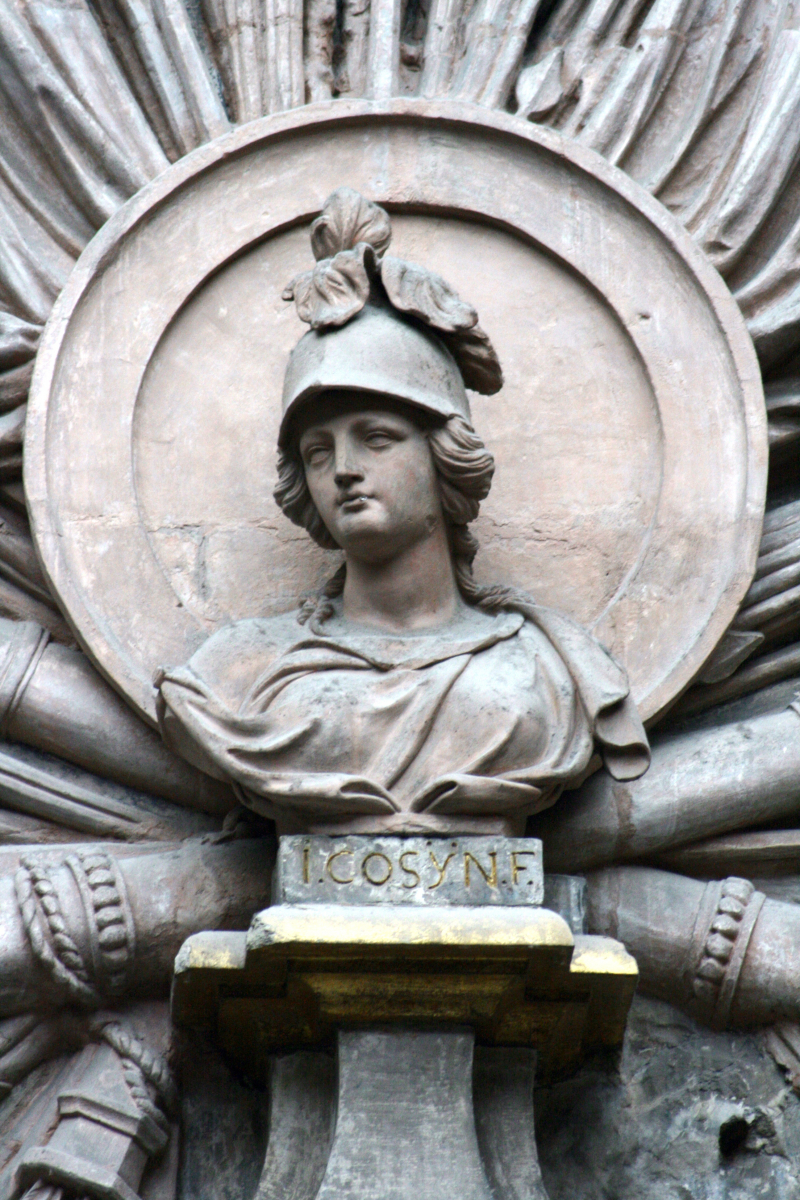
en.wikipedia.org 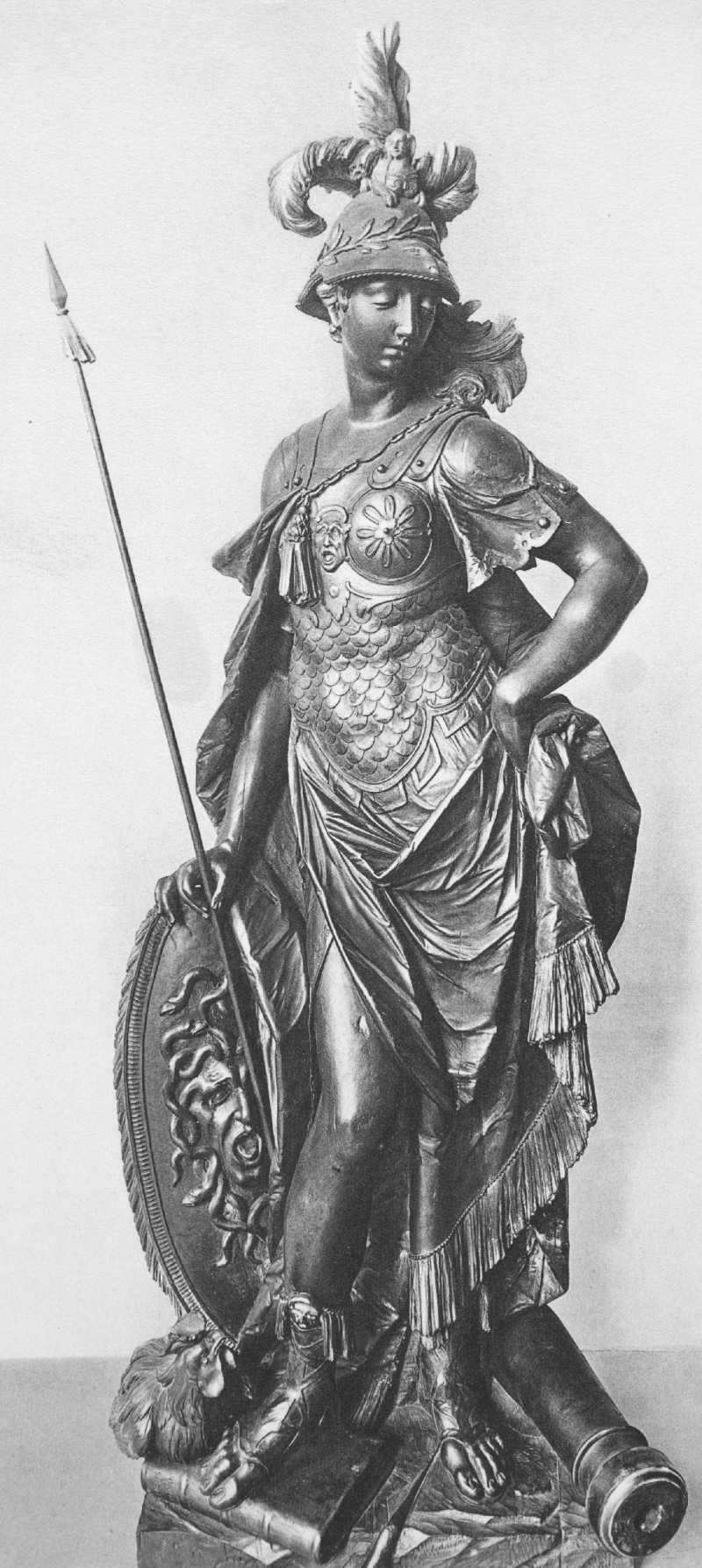
en.wikipedia.org -
Spes was the goddess of hope in ancient Roman religion. There are numerous temples dedicated to Spes, and inscriptions show that she received both private devotion and state cult.
A temple to "ancient Hope" (Spes vetus) was said to have existed near the Praenestine Gate during the Republic. It was linked to events in the 5th century BC, although its existence as anything other than a private shrine has been questioned. As a result of pledges made to these goddesses during the First Punic War, Aulus Atilius Calatinus constructed a well-documented Spes temple alongside Fides. In 110 BC, a temple to the triad deities Spes, Fides, and Fortuna was established in Capua.
Spes was one of the divine personifications of the Imperial Virtues cult. Hope was related to the emperor's capacity as Augustus to ensure blessed conditions. Spes, like Salus ("Salvation, Security"), Ops ("Abundance, Prosperity"), and Victoria ("Victory"), was a divine force that had to originate from the gods, as opposed to divine powers that lived within the individual, like Mens ("Intelligence"), Virtus ("Virtue"), and Fides ("Faith, Fidelity, Trustworthiness").
Elpis, the Greek counterpart of Spes, had no official worship in Greece. The main myth in which Elpis appears is the story of Pandora. The Greeks had ambiguous or even negative views about "hope," and the term was unimportant in the Stoic and Epicurean intellectual systems.
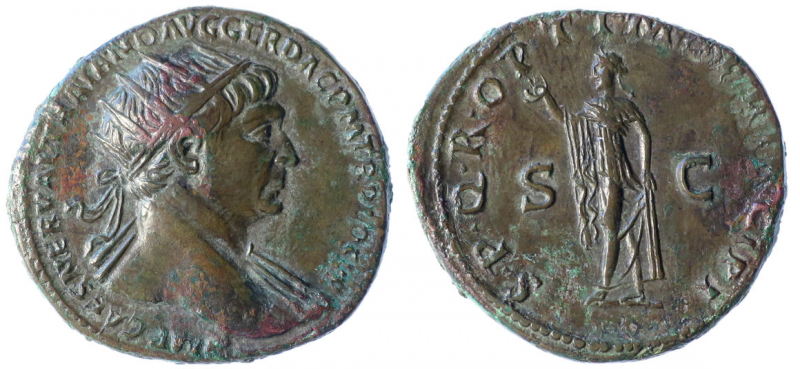
An ancient Roman coin with Spes on the reverse -en.wikipedia.org 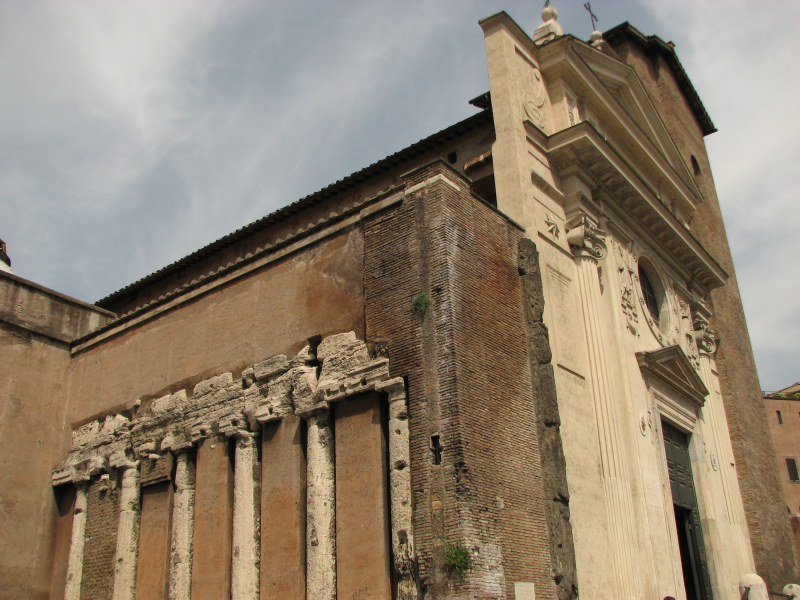
Columns from the Temple of Spes in the Forum Holitorium -wikiwand.com














